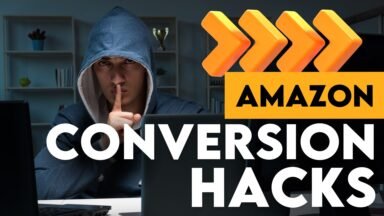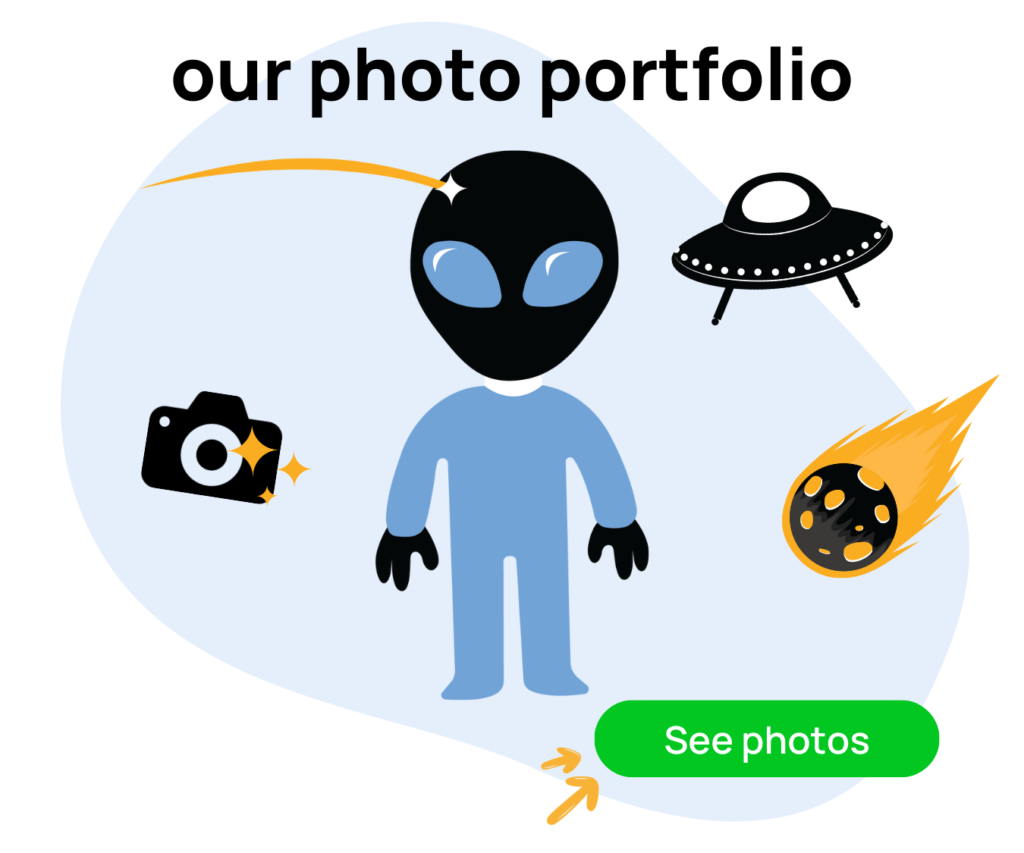What is Amazon Enhanced Brand Content (EBC) or A+ Content? There are many different names for it, but whatever you want to call it, EBC is Amazon’s content feature that allows you to showcase your product, increase your conversion rate and reduce return rate through enhanced product descriptions. Amazon’s Enhanced Brand Content is influential in your Amazon marketing and can give you the edge over your competition. So in this blog post, I’m going to outline some do’s and don’ts; Amazon marketing A+ (EBC) content strategies that you should follow to make the best of it.
Before we jump into it, if you’ve just chanced on my blog, my name is Ian Smith, and I run an Amazon Marketing Agency called Evolve Media.
What We Do At Evolve Media.
We help Amazon sellers optimize their Amazon listings with photos, videos, copywriting and get their listings converting as high as possible. This involves doing product photoshoots, video shoots, and overall marketing both on and off Amazon like running Email Marketing campaigns, Google Ad campaigns, getting Amazon data and Instagram user data and then marketing directly to potential customers. If any of that sounds appealing to you and you want to book a free consulting call with us, then head over to EvolveMediaAgency.com. If you, however, just want to optimize your Amazon listing on your own, we’ve got a great Amazon listing checklist for you at zonchecklist.com. We broke down all the different sections on an Amazon listing page and created different sales strategies for each section. It’s a checklist that you can check off as you implement the different sales strategies.
Right, let’s jump into the top ten Amazon marketing A+ (EBC) content strategies!
Ten Dos & Don’ts (Amazon Marketing A+ Content Strategies) to Employ When Building Your Amazon Enhanced Brand Content.
1. Add Essential Technical Details
Because it is essential to be as accurate as possible, adding the exact details or requirements of your product instead of using generic terms that make it difficult for your customers to decide is necessary. For example, if you are selling shirts, you want to include a sizing guide or the dimension. Your potential customers should know the exact size “Large” is instead of leaving them to guess if it matches up with the “Large” they are comfortable wearing. You also want to give insight into what is in the packaging. What exactly are they going to get? A top-down photoshoot showing the content of your package helps avoid confusion and manages their expectations on what they’re going to receive. This approach will help increase customer satisfaction and lower the product return rate.
2. Use Natural, Real-Life Pictures
The next thing to avoid is creating images that make your product look fanciful; for example, photoshopping your product into stock photos to look like it’s naturally there. People see right through this, and it’s going to hurt your brand’s credibility. Instead, invest money into getting a real-life photoshoot done. When you have to do a stock photo image replacement for some reason, have your product laying over it with maybe a text bar and some text over it. Just so it doesn’t look like you’re trying to fit your product in the image, which makes it quite clear that it’s not there.
3. Use a Comparison Table
Amazon is getting extremely competitive; more and more sellers are piling into the marketplace, so you need to make sure you’re setting yourself apart from those other competitors. One way you do this is by using comparison tables. Why should the customer choose you or your brand? You don’t want to mention any brand names but show the options out there and why you’re the better option. It could be a pricing table that compares your prices to your competitors. Talk about what is in your product package that your competitors don’t add. Talk about your raw materials or your lifetime warranty. Is a portion of your profits going to a good cause? Talk about these in your pricing and comparison table. The goal is to stand out and make it very clear you’re different from the other options out there.
4. Avoid Fluffy & Untrue Claims
This strategy goes without saying; don’t make big claims or promises that you know are false. Naturally, I would assume that you’re not going to do this but don’t make big lofty claims or use fluffy copy in your descriptions. Making big general statements like, “We’re the best product in the world” will not resonate with anybody. People are just going to see right through, and it’s going to hurt your reputation and the relationship you’re trying to build with your potential customer.
5. Use Social Proof Statements
It’s against Amazon’s policies to mention promotions in your Enhanced Brand Content. However, you are allowed to include social proof statements like “Over 500,000 satisfied customers” or “Over a million five-star reviews” if you have that. Talk about how many customers you’ve helped or how many happy customers you have. If you have mentions in media outlets or have influencers talking about your product positively, mention them. How long have you been in the industry? The main goal of social proof is third-party validation, which establishes you as an authority in your space, and gives you credibility.
6. Avoid Small-Sized Texts
Make it easier for your potential customers to read your product descriptions. Avoid using small-sized texts when writing product descriptions. If you have a ton of text, don’t cramp them. Spread it out, make your fonts bigger, or better yet, scale down on the number of words you’re using. If it’s an image, spread the text around on different pictures. Don’t overcrowd an image with small text. Your potential customers will likely overlook it and scroll over it.
7. Avoid Using Tons of Raw Text
This point is different from the previous. Here, we are looking at the amount of raw text. However, this depends on the demographic you are trying to reach with your listings. The older generation is more inclined to reading text, but the younger generation doesn’t pay too much attention to blocks of just raw text. Some people also assume that this helps with SEO and helps you rank better for specific keywords, but it’s not necessarily the case. SEO or ranking power usually comes from your title, bullet points, and the use of alt text in your images. I generally recommend you use less text in your product descriptions. Instead, put that text in your pictures, and again, narrow it down so don’t have a long paragraph of like 100 words in an image but 20 or 30 words roughly. Grab the attention of our potential customers with big and bold words. Sentences should be easy to read or skim through. This way, they can get a good amount of the information just by running their eyes over your EBC content and not have to pay a whole ton of attention to understand what you’re offering.
8. Use a Disclaimer & Include Insider Tips
If you need to, add disclaimers to protect your business and avoid being held for some unnecessary claims. But more importantly, include insights or tips into how your customers can maintain the product, how they need to use it, and set up Frequently Asked Questions that give insider advice into what people are asking in your Customer Questions & Answers area. You could include in the FAQ questions that you’ve had or things you usually want to know when buying different products. If you have a lot of competitors, go to their pages and read their negative reviews, see what negative things people are saying about your competitors and address those concerns in your FAQ or listings if your product addresses them.
9. Include Use-Case Pictures
For example, if you sell a kitchen product, show a kitchen, your product on the counter, and take a real-life picture of people using your product smiling. Though mostly subconscious, people resonate with other people. So, if I’m looking at a listing and I see someone using the product, it’s will resonate more with me than the product just sitting there. Have top-down shots with solid backgrounds, but balance these with use-case images. When you do photoshoots for these use-case pictures, however, use people who are your ideal customers. If you’re selling to women aged 40 to 60 years old, don’t have a woman between 20 and 30 years using the product.
10. Use Alt-Text In Your Images
The last piece of strategy I recommend is using alt-text in your images. Use your SEO keywords in your pictures in your EBC area. This approach will help you with indexing for those specific keywords. And will help you with ranking as well, so definitely use it. Put your keywords in the alt-text in the images you upload to Amazon.
So those are my do’s and don’ts, Amazon marketing A+ content strategies that would help you edge your competition using Amazon’s A+ Content or Enhanced Brand Content. Hopefully, this helps you design some great Amazon Enhanced Brand Content.
If you need any help, we would love to help you out. We are reasonably priced, so reach out to us by going to EvolveMediaAgency.com where you can book a free consulting call with us as well. You can also access our Amazon Listing Checklist at zonchecklist.com, which has more information to help you build out your Enhanced Brand Content or A+ Content area on your Amazon Listing page. Thank you so much for reading.





